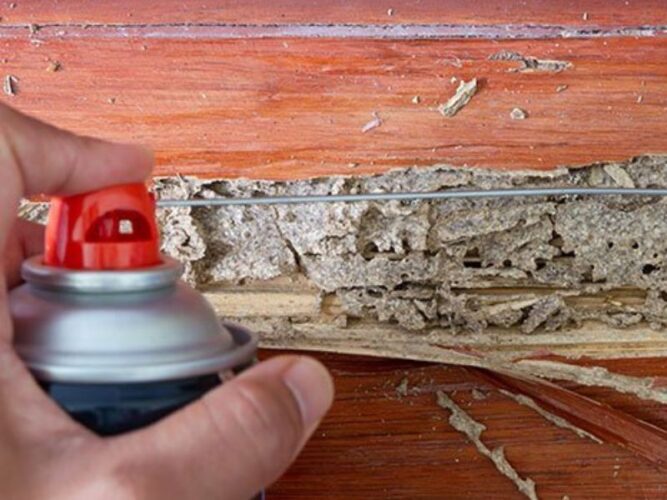Wooden structures can add warmth, beauty, and charm to our homes and buildings. However, they are also susceptible to termite damage, which can compromise their structural integrity and lead to costly repairs.
In this article, we will discuss effective strategies to prevent termite infestations and safeguard your wooden structures. By implementing these preventive measures, you can protect your investments and maintain the longevity of your wooden assets.
What are Termites?
Before delving into prevention methods, it’s important to understand the nature and behavior of termites. Termites are social insects that thrive in colonies and feed on cellulose-based materials, including wood.
They are attracted to moist environments and often enter structures through soil-to-wood contact or by building mud tubes along the foundation. Knowing their habits will help in devising effective prevention strategies.
Eliminate Moisture Sources:
Termites require moisture to survive and thrive. By reducing moisture levels around your property, you can discourage termite infestations. Here are some steps to consider:
- Fix any leaks or plumbing issues that create excess moisture.
- Ensure proper drainage away from the foundation.
- Use downspouts, gutters, and splash blocks to divert water away from wooden structures.
- Avoid overwatering plants and trees near wooden structures.
- Improve ventilation in crawl spaces and attics to reduce humidity levels.
Maintain Distance from Soil:
Direct contact between soil and wooden structures provides easy access for termites. By creating a barrier, you can impede their progress. Consider the following preventive measures:
- Install physical barriers such as a layer of crushed stone or a metal mesh between soil and wooden structures.
- Regularly inspect and maintain this barrier to ensure its effectiveness.
- Keep wooden structures at least six inches above the ground, especially in areas prone to termite infestations.
- Avoid storing firewood or wooden debris near the building, as they can attract termites.
Treat and Protect Wood:
Protecting the wood itself is crucial to prevent termite damage. There are various methods and products available to treat and safeguard wooden structures:
- Apply wood preservatives and termite-resistant coatings to vulnerable areas.
- Utilize pressure-treated lumber for construction projects, as it contains chemicals that deter termite infestations.
- Regularly inspect wooden structures for signs of decay or damage and promptly address any issues.
- Consider professional termite treatments, such as soil treatment or termite bait systems, especially in high-risk areas.
Conduct Regular Inspections:
Regular inspections are vital in detecting termite activity at an early stage. Engage a professional pest control service or follow these guidelines for thorough inspections:
- Inspect wooden structures, including the foundation, walls, attic, and crawl spaces.
- Look for signs of termite presence, such as mud tubes, discarded wings, or wood damage.
- Pay attention to areas with high moisture levels or previous termite infestations.
- Monitor areas where wood is in direct contact with soil.
- Act promptly if any signs of termite activity are detected.
Educate Yourself and Seek Professional Help:
Staying informed about termite prevention and treatment methods is essential. Educate yourself on the signs of termite infestation and preventive measures. If you suspect or confirm a termite problem, it is recommended to seek professional assistance.
Experienced pest control professionals can provide comprehensive inspections, targeted treatments, and ongoing monitoring to ensure long-term protection against termites.
Conclusion:
Preventing termite damage to wooden structures requires a combination of proactive measures and regular inspections.
By eliminating moisture sources, maintaining a distance from the soil, treating and protecting wood, conducting regular inspections, and seeking professional help when needed, you can significantly reduce the risk of termite infestations and protect the integrity of your wooden structures.
Remember, prevention is key to avoiding costly repairs and preserving the beauty and functionality of your wooden assets.

